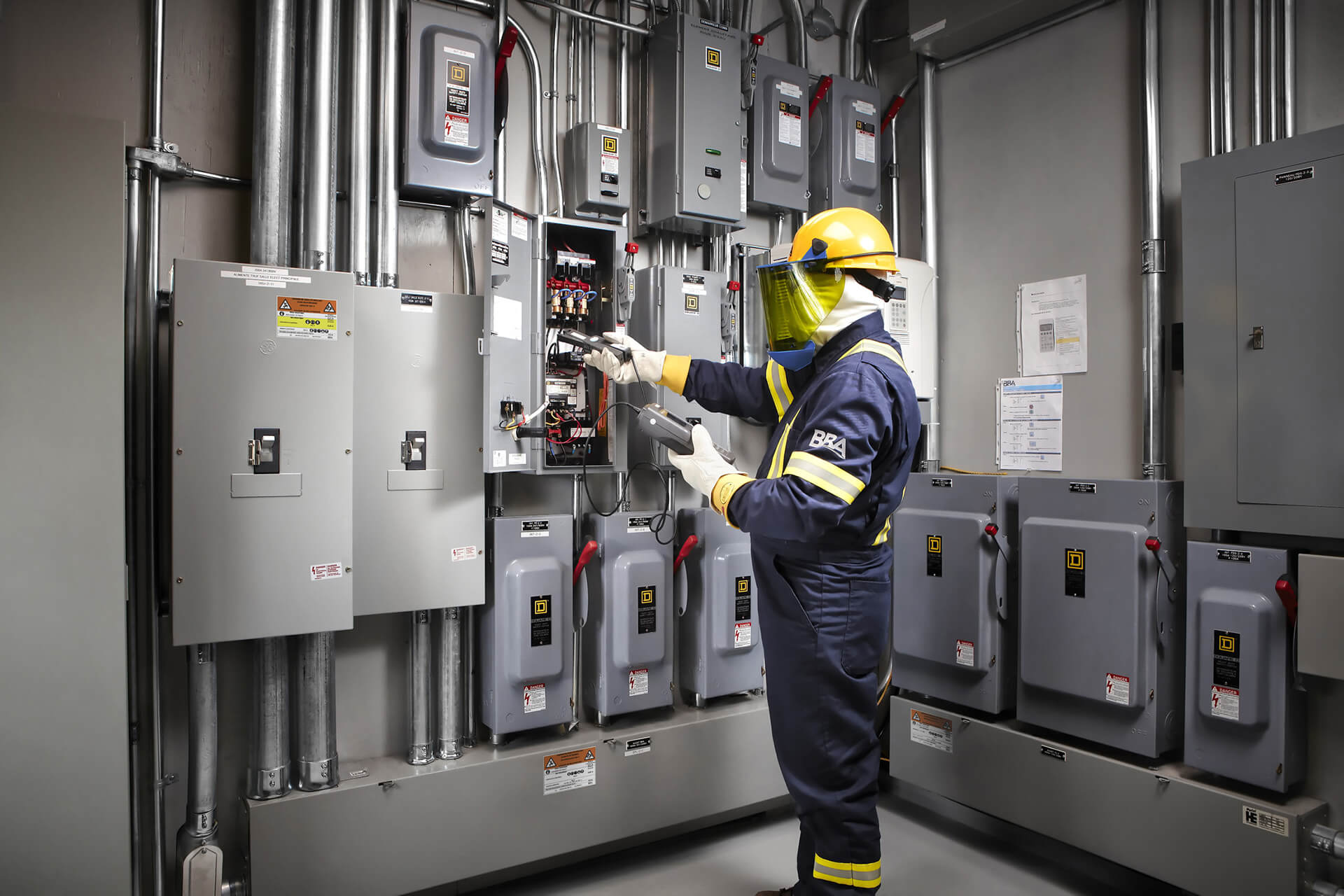Electrical safety is of paramount importance in any workplace. Among the various hazards that personnel working with electrical equipment may encounter, one of the most critical is an Arc Flash.
An Arc Flash refers to an electrical explosion that emits an intense burst of heat, capable of causing severe burns and even fatalities. To effectively minimize this risk, a comprehensive Arc Flash Analysis is conducted.
This analysis involves a detailed electrical system evaluation, identifying potential hazards, and implementing appropriate safety measures to safeguard workers and prevent accidents.
By undertaking these proactive steps, organizations can ensure a safer working environment and protect their employees from the dangers associated with Arc Flash incidents. This article will guide you through the steps of an arc flash analysis, its importance, and how it can protect your team from potential electrical hazards.
What is an Arc Flash Analysis?
An arc flash analysis, also known as an arc flash study, is a comprehensive and highly specialized incident energy analysis conducted by qualified electrical personnel. Its primary purpose is establishing robust safety protocols to mitigate the risks associated with arc flash hazards in a workplace environment.
During an arc flash analysis, a professional electrical engineer meticulously evaluates the electrical distribution system to identify potential arc flash hazards. This involves assessing the incident energy available at various electrical components and devices that personnel may come into contact with. By quantifying the incident energy, the study provides valuable information that helps develop effective protective measures and educate workers about the risks.
The arc flash analysis considers the electrical system configuration, equipment ratings, fault current levels, and protective device coordination. The study determines the potential for arc flash incidents through detailed analysis and calculations and provides recommendations to minimize the associated risks.
An arc flash analysis is a crucial component of workplace safety, ensuring the well-being of electrical personnel and promoting a secure and hazard-free working environment.
Why and When Do You Need an Arc Flash Analysis?
An arc flash analysis is a critical process that aims to identify electrical risk levels and implement effective safety practices to mitigate these risks. By conducting a thorough study, we can proactively protect individuals from potential hazards and ensure their well-being. This comprehensive analysis involves identifying potential arc flash incidents, assessing their severity, and determining the appropriate safety measures to prevent injuries and fatalities.
To comply with regulations set by the Occupational Safety and Health Administration (OSHA) and the National Fire Protection Association (NFPA), workplaces must prioritize the implementation of an arc flash analysis. This not only assures adherence to legal requirements but also safeguards the welfare of workers who handle electrical systems daily.
By investing in an arc flash analysis, organizations demonstrate their commitment to creating a safe work environment and reducing the risks associated with electrical systems. This proactive approach enhances workplace safety and instills confidence in the workforce, enabling them to carry out their duties with peace of mind.
The 7 Steps to Complete an Arc Flash Analysis
The process of conducting an arc flash analysis involves several steps:
1. Data Collection: Gathering information about the facility’s electrical system. This data includes details about the system’s layout, electrical ratings of equipment, lengths and cross-sectional areas of all cables, etc.
2. System Modelling: The collected data is used to create an electrical system model using specialized software.
3. Short Circuit Study: This step involves determining the magnitude of prospective short circuit currents.
4. Protective Device Coordination Study: We ensure that only the closest circuit breaker or fuse to an overcurrent condition will operate.
5. Arc Flash Hazard Calculation: The incident energy exposure level in calories per square centimeter (cal/cm2) is calculated for each piece of equipment.
6. Safety Training: Once the risks have been identified and assessed, appropriate safety training is provided to the personnel.
7. Arc Flash Hazard Labelling: Finally, warning labels are affixed to the electrical equipment to alert workers of the potential arc flash hazard.
Arc Flash Analysis: Protecting Your Team from Electrical Hazards – In Conclusion
Conducting an arc flash analysis is of utmost importance in ensuring a safe working environment for your team. This comprehensive study allows us to gain a deep understanding of the potential risks associated with the electrical systems in your facility.
By analyzing factors such as fault currents, protective device coordination, and equipment labeling, we can accurately assess the potential hazards and implement tailored safety measures to mitigate them effectively. Remember, prioritizing not only regulatory compliance but also the well-being of your team is crucial in maintaining a secure workplace.
